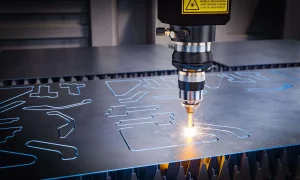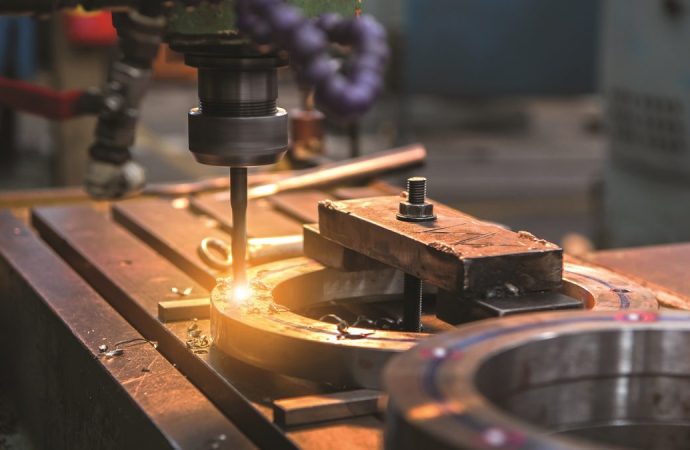Introduction In recent years, the demand for ultra-hard material cutting machines has experienced substantial growth, driven by the increasing use of ultra-hard materials across various industries such as automotive, aerospace, construction, and electronics. These materials, which include ceramics, tungsten carbide, and high-strength alloys, require specialized equipment for precise cutting, shaping, and processing. As industries continue
Introduction
In recent years, the demand for ultra-hard material cutting machines has experienced substantial growth, driven by the increasing use of ultra-hard materials across various industries such as automotive, aerospace, construction, and electronics. These materials, which include ceramics, tungsten carbide, and high-strength alloys, require specialized equipment for precise cutting, shaping, and processing. As industries continue to advance, the market for ultra-hard material cutting machines has evolved, with new technologies improving performance and efficiency.
This article explores the global ultra-hard material cutting machines market, including its size, trends, opportunities, and industry forecasts up to 2032. By understanding these factors, businesses can make informed decisions about investments, technology, and market positioning.
Understanding Ultra-Hard Material Cutting Machines
Ultra-hard materials are materials that possess exceptional hardness and strength, making them challenging to cut, machine, or shape using standard tools. These materials are often used in applications that require high durability, wear resistance, and performance in extreme conditions. Examples include materials used in mining, military applications, medical devices, and heavy machinery.
Ultra-hard material cutting machines are specialized machines designed to process these tough materials. They use various cutting methods such as laser cutting, water jet cutting, abrasive cutting, and diamond cutting tools to ensure precision and quality in the final product.
Market Overview: Global Ultra-Hard Material Cutting Machines
The global ultra-hard material cutting machines market has grown significantly in recent years, with a compound annual growth rate (CAGR) projected to continue as industries demand more efficient and reliable cutting technologies.
1. Market Size and Growth
The global market for ultra-hard material cutting machines is valued at several billion dollars and is expected to expand further over the next decade. As industries such as automotive, aerospace, and construction embrace the use of ultra-hard materials, the demand for specialized cutting equipment is growing. The market size is anticipated to grow steadily, driven by technological advancements and increasing applications of ultra-hard materials in industrial production.
2. Market Drivers
Several factors contribute to the growth of the ultra-hard material cutting machines market:
- Technological Advancements: The development of advanced cutting technologies like laser cutting, water jet cutting, and high-precision diamond tools has significantly enhanced the cutting precision and efficiency, making it easier to handle ultra-hard materials.
- Industrial Applications: The use of ultra-hard materials in industries such as aerospace, automotive, and electronics is rising due to their superior durability and strength. This increases the demand for cutting machines capable of processing these materials.
- Demand for Precision and Quality: Ultra-hard materials are typically used in applications where accuracy and quality are crucial. As a result, industries are seeking cutting machines that can provide high-precision results while maintaining material integrity.
- Growing Construction Sector: The construction industry, particularly in emerging markets, is driving the demand for ultra-hard material cutting machines for tasks like cutting reinforced steel, concrete, and other hard materials.
3. Market Challenges
Despite its growth, the ultra-hard material cutting machines market faces several challenges:
- High Initial Costs: The machines used for cutting ultra-hard materials can be costly to purchase and maintain. Smaller businesses may find it challenging to invest in high-tech machinery.
- Skill Requirements: Operating ultra-hard material cutting machines requires specialized skills and knowledge. The shortage of trained professionals in this field can hinder the market’s growth.
- Energy Consumption: Some cutting methods, especially laser and water jet cutting, can consume large amounts of energy, increasing operational costs for businesses.
Key Trends in the Ultra-Hard Material Cutting Machines Market

Image by: Yandex.com
Several key trends are shaping the future of the ultra-hard material cutting machines market. Understanding these trends will provide valuable insights for businesses seeking to stay competitive in the industry.
1. Automation and Industry 4.0 Integration
Automation and Industry 4.0 technologies are transforming the manufacturing landscape. The integration of smart machines, sensors, and cloud computing into ultra-hard material cutting machines is making it possible to monitor performance in real-time, optimize workflows, and reduce human error. Automated cutting processes can improve precision, speed, and cost-efficiency, benefiting both manufacturers and end-users.
2. Laser Cutting Technology Advancements
Laser cutting has emerged as one of the leading technologies for ultra-hard material cutting due to its precision and ability to cut intricate designs with minimal material waste. Advances in laser technology, including fiber lasers and ultra-fast lasers, are further improving the cutting process for ultra-hard materials, leading to faster processing times and higher-quality results.
3. Increasing Demand for Customization
As industries demand more specialized and customized solutions, manufacturers of ultra-hard material cutting machines are responding by offering more flexible, tailored equipment. These machines can be adjusted to accommodate different materials, sizes, and cutting methods. This trend is especially strong in industries like aerospace, where custom components are often required.
4. Environmentally Friendly Cutting Techniques
With increasing pressure to reduce environmental impact, many manufacturers are focusing on developing eco-friendly cutting technologies. Water jet cutting, for example, uses high-pressure water streams mixed with abrasives, generating no heat and producing minimal waste. As sustainability becomes a key focus for many industries, demand for environmentally friendly cutting solutions is expected to rise.
Market Segmentation: Types of Ultra-Hard Material Cutting Machines
The ultra-hard material cutting machines market can be segmented based on technology, material type, and end-user industry. This segmentation allows businesses to identify opportunities and challenges in specific areas of the market.
1. By Technology
- Laser Cutting Machines: These machines use high-powered lasers to cut through ultra-hard materials with extreme precision.
- Water Jet Cutting Machines: Water jet cutting utilizes high-pressure water combined with abrasives to cut materials. It’s ideal for materials sensitive to high temperatures.
- Abrasive Cutting Machines: These machines use abrasive particles to wear away the material, commonly used for materials like ceramics and tungsten carbide.
- Diamond Cutting Machines: Diamond tools are used for the most challenging ultra-hard materials due to their superior hardness.
2. By Material Type
- Ceramics: Often used in industries like medical devices, ceramics are among the hardest materials that require specialized cutting equipment.
- Tungsten Carbide: This material is used in cutting tools, mining, and manufacturing, making it one of the most common materials processed by ultra-hard cutting machines.
- High-Strength Alloys: Used in aerospace and automotive industries, these alloys need precision cutting to create intricate and high-performance components.
3. By End-User Industry
- Automotive: The automotive sector requires ultra-hard materials for engine components, brake systems, and precision gears.
- Aerospace: Ultra-hard materials are essential in the aerospace industry for creating durable and high-strength parts that can withstand extreme conditions.
- Construction: Cutting machines are used to process reinforced concrete, stone, and metal, which are essential materials in construction.
- Electronics: Ultra-hard materials are increasingly used in the production of electronic devices, semiconductors, and medical equipment.
Opportunities and Future Outlook
The ultra-hard material cutting machines market is poised for significant growth in the coming years. Opportunities lie in the expansion of industries such as aerospace, automotive, and construction, all of which rely heavily on ultra-hard materials. Additionally, the rise of emerging markets in Asia Pacific, Latin America, and Africa is expected to contribute to the market’s growth, as infrastructure and industrial projects increase.
Technological advancements, such as automation, AI integration, and eco-friendly cutting methods, will continue to reshape the market. Companies that invest in innovation and offer customized solutions will find ample growth opportunities in this dynamic sector.
Conclusion
The global ultra-hard material cutting machines market is a rapidly growing industry with significant opportunities for businesses that understand the importance of precision, technological advancements, and industry-specific needs. As the demand for ultra-hard materials increases in industries like aerospace, automotive, and construction, the market for specialized cutting equipment is expected to continue expanding. Businesses must stay informed about market trends, technological innovations, and customer needs to remain competitive and thrive in this evolving landscape. By embracing these changes, companies can capitalize on the growing demand for ultra-hard material cutting solutions and achieve long-term success.
















